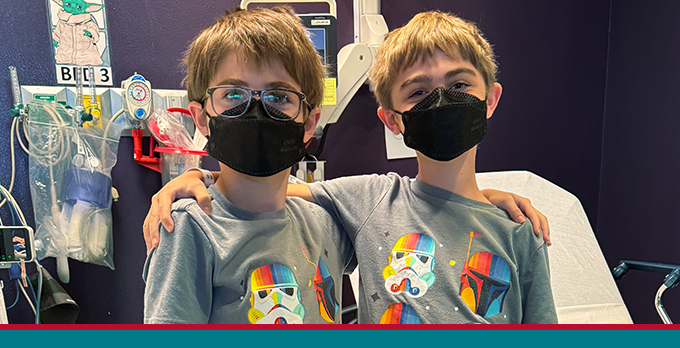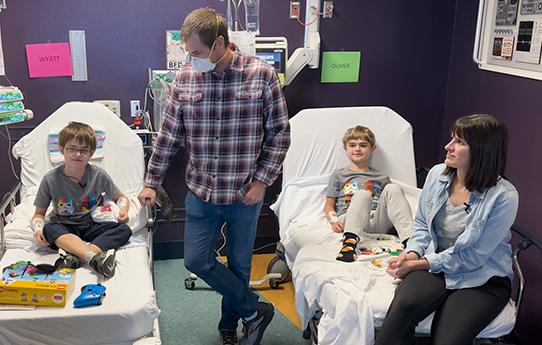 It’s hard to tell at first glance that this is a life-changing day for two brothers. The 10- and 12-year-olds seem like typical boys in bed wearing matching t-shirts playing video games and building Legos. But the two brothers aren’t at home, they are at The University of New Mexico Children’s Hospital, part of UNM Hospital. They are about to be the first in the state to receive a new, cutting-edge treatment that could drastically improve their futures.
It’s hard to tell at first glance that this is a life-changing day for two brothers. The 10- and 12-year-olds seem like typical boys in bed wearing matching t-shirts playing video games and building Legos. But the two brothers aren’t at home, they are at The University of New Mexico Children’s Hospital, part of UNM Hospital. They are about to be the first in the state to receive a new, cutting-edge treatment that could drastically improve their futures.
The team at UNM Hospital is making this possible.
While the two boys playing may not fully realize the gravity of the day, their parents definitely do.
“It feels like Christmas morning,” said father Aaron Haslam. “Last night, I couldn't sleep, just like a kid. That’s how I feel; I'm very excited.”
“We’re feeling very comfortable and confident about this,” said the boys’ mother Danielle Haslam.
In just moments the boys will receive an intravenous dose of Elevidys —the first in New Mexico—that could slow the progress of their type of muscular dystrophy. Meeta Cardon, MD, a child neurologist and pediatric neuromuscular specialist at UNM Children’s Hospital is the boys’ doctor.
“Today, we're excited that we have an opportunity to provide groundbreaking treatment for these patients at UNM Children’s Hospital. It is a gene replacement therapy,” she said.
The Long Journey
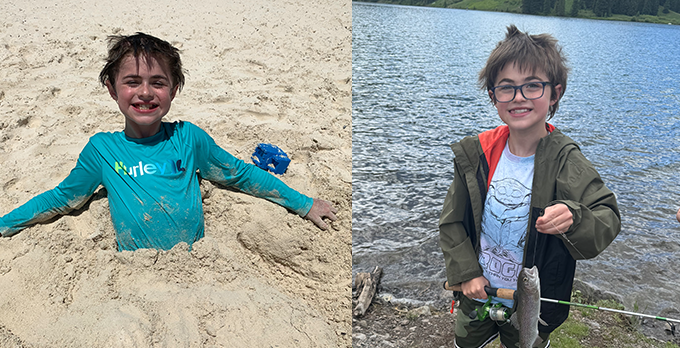 The road leading up to this moment started 10 years ago for the Haslam family, when their oldest boy was just two-years-old. He was having trouble developing some of his motor skills.
The road leading up to this moment started 10 years ago for the Haslam family, when their oldest boy was just two-years-old. He was having trouble developing some of his motor skills.
“He was really struggling to walk, so he was in physical therapy,” Aaron Haslam said. “His physical therapist said he might have a condition called Duchenne Muscular Dystrophy (DMD).”
A blood test confirmed their son did have DMD, one of the most severe and most common forms of muscular dystrophy in children. The genetic disorder causes progressive muscle degeneration.
But that wasn’t all.
The couple was told if one sibling has it, another might have it as well. So, the family also had their six-month-old son tested and he also was diagnosed with DMD.
What is Duchenne Muscular Dystrophy?
- Genetic disorder that causes progressive muscular degeneration and weakness
- Symptom onset typically happens in early childhood
- Primarily affects boys
- Because of advancements in care life expectancy into early 30s is becoming more common.
- More info on DMD here.
 “It causes weakness over a long period of time in childhood, and ultimately leads to heart failure or potentially lung failure,” Cardon said. “Although we have had some treatments come out over the last several decades, we don't yet have a cure for this condition.”
“It causes weakness over a long period of time in childhood, and ultimately leads to heart failure or potentially lung failure,” Cardon said. “Although we have had some treatments come out over the last several decades, we don't yet have a cure for this condition.”
Cardon says advancements in treatments have increased life expectancy for children with DMD, but there’s still a lot of work to be done.
“We better understand the needs of the heart, the needs of the lungs, how to manage scoliosis in our patients,” Cardon said. “All of these things take a multidisciplinary team to help keep our patients as healthy as possible for as long as possible. We see our patients living into adulthood and even patients living into middle age. So, it's still a very serious condition.”
“It was pretty devastating,” Aaron Haslam said. “I've never experienced anything remotely close to that feeling. I had heard about muscular dystrophy before, but never really had any interaction with anybody with it. It was a really challenging time for me personally.”
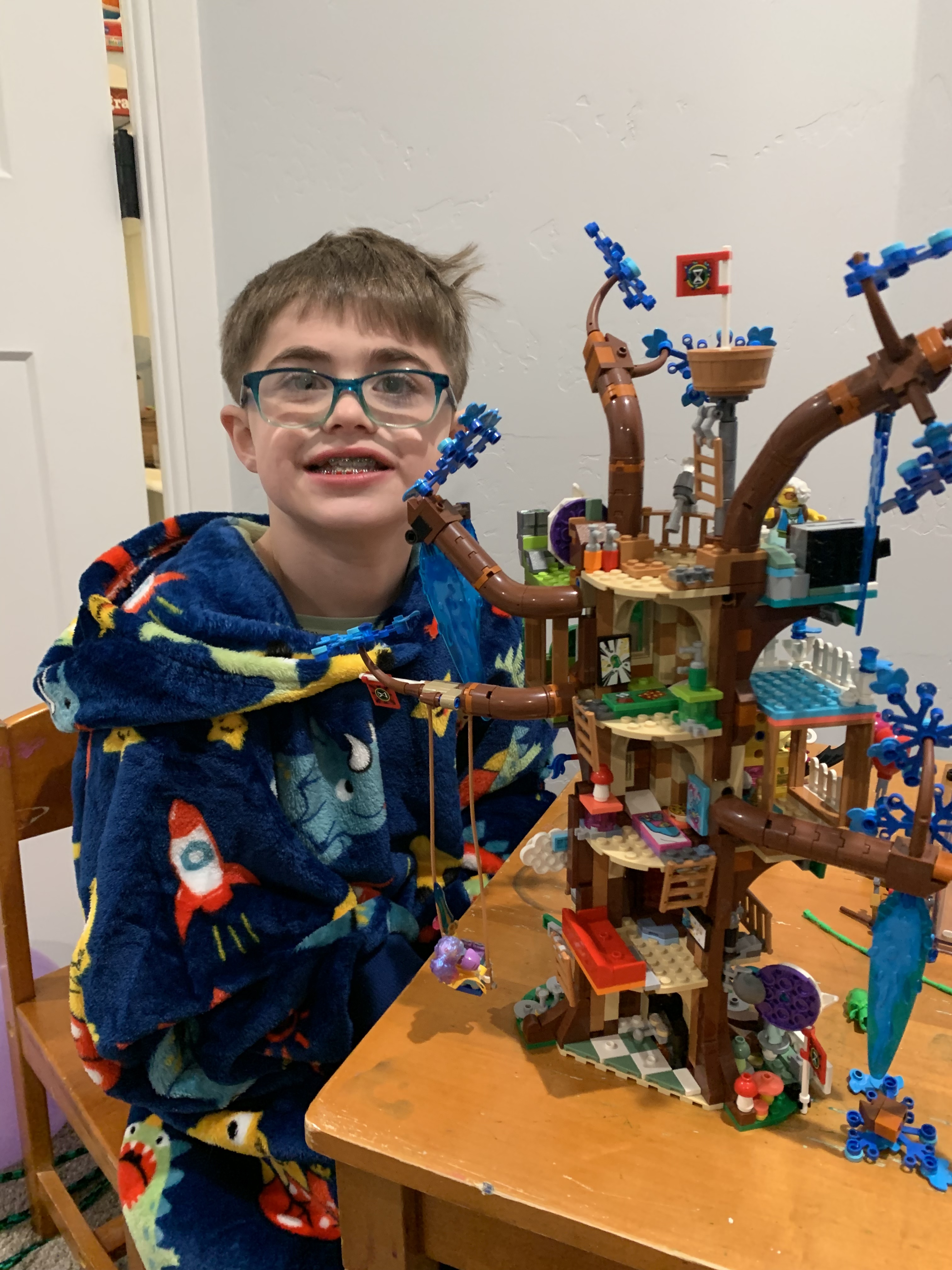
“It was overwhelming,” Danielle Haslam said. “I had a lot of questions and we had to do a lot of research.”
The Haslams said that research became a part of their life and part of their hope.
“As you talk to different physicians and providers, you get a better understanding of what's coming,” Aaron Haslam said. “One of the first physicians we were working with basically said it's a matter of kicking the can down the road as long as you can in hopes that something game-changing will come along in 10 years.”
And 10 years later, something game-changing did happen. In June 2024, the U.S. Food and Drug Administration (FDA) expanded approval of a gene therapy, Elevidys, for children four years of age and older. The treatment helps the body to make an important protein that DMD patients are lacking to help their muscles. Although not considered a cure, the hope is that the gene therapy will significantly slow muscular degeneration.

This treatment has been long anticipated. People like myself, who are pediatric neuromuscular specialists, have been closely following the development of gene therapy for DMD. I've been caring for children with this condition and other neuromuscular disorders for more than 10 years. This is the first gene replacement therapy that we've had available for DMD.
UNM Hospital Invests in its Patients
Elevidys is a one-dose per patient, once in a lifetime treatment. But each dose costs upwards of $3 million. Although the Haslam’s insurance approved the treatment, UNM Hospital leadership agreed to front the cost – more than $6 million dollars--so the boys could receive the treatment as soon as possible. Receiving the treatment near their home also means they won’t have to travel out-of-state for the infusion and the critical three-month monitoring period following the treatment.
Mike Chicarelli, DNP, is the Chief Operating Officer at UNM Hospital.
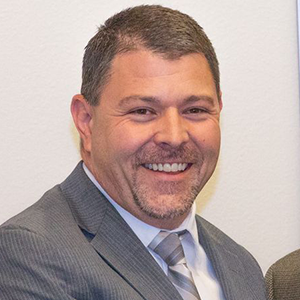
The decision was actually quite easy because this is the right thing to do for these patients. This is a life-changing medication that gives them each an opportunity to have a better life. Also, this treatment specifically aligns with our mission of offering high quality and advanced care locally, ensuring that patients receive the best possible care without leaving their home state.
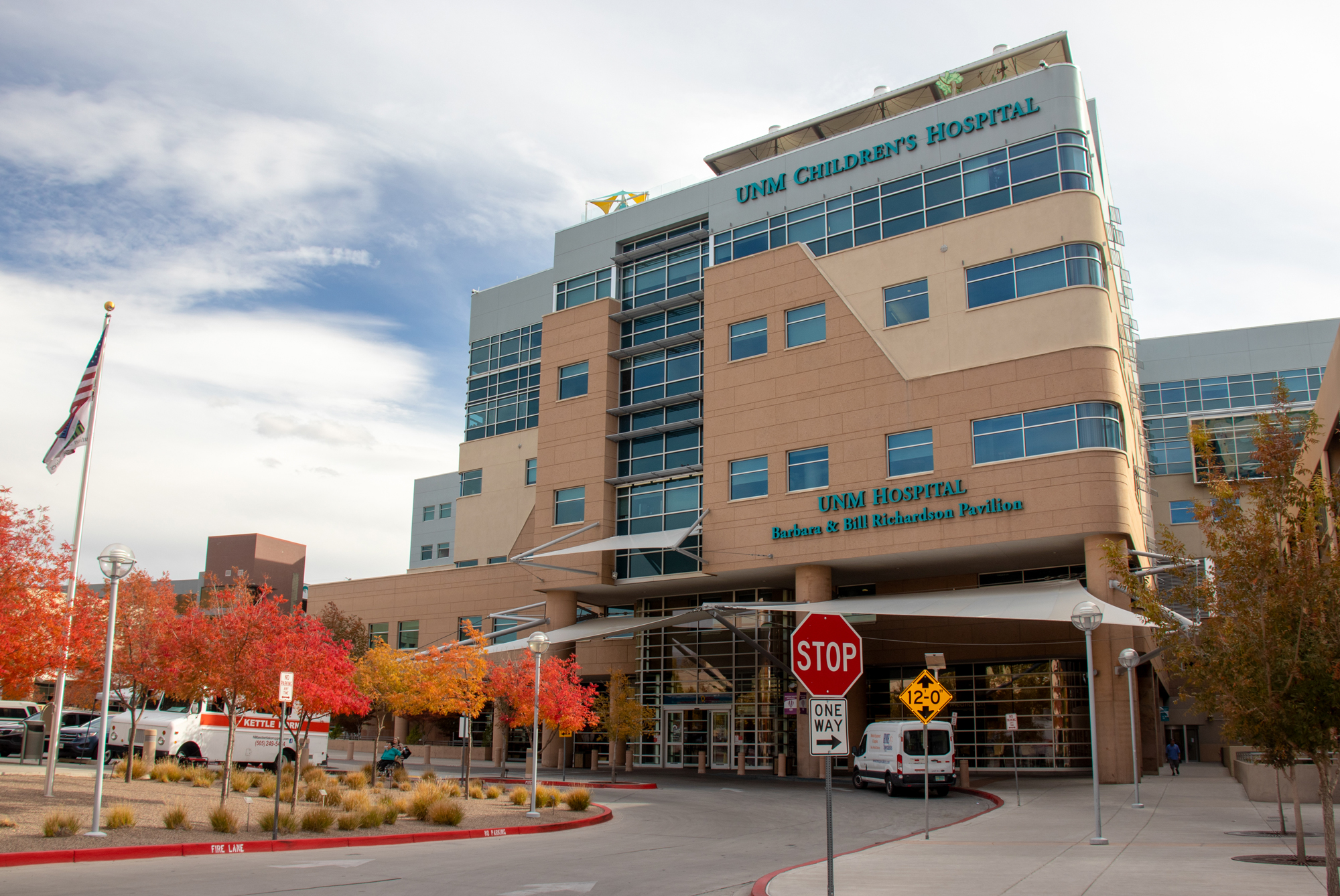 “UNM Hospital has been fantastic,” Danielle Haslam said. “From the beginning, the nurses, the doctors have all been helping us. We haven't had to do much, like write any letters to insurance or anything. They handled all of that, and they're very good at letting us know the process, what's going on when things were approved. And the staff and everyone is so friendly and great to us and to our boys. It's been a very great experience.”
“UNM Hospital has been fantastic,” Danielle Haslam said. “From the beginning, the nurses, the doctors have all been helping us. We haven't had to do much, like write any letters to insurance or anything. They handled all of that, and they're very good at letting us know the process, what's going on when things were approved. And the staff and everyone is so friendly and great to us and to our boys. It's been a very great experience.”
Cardon is proud to be part of the team at UNM Hospital.
“I'm so grateful for the support of UNM Hospital, for helping us get these patients the treatment that they absolutely need,” Cardon said. “And it's absolutely incredible that UNM Hospital will support our clinical program so that our patients who rely on us for care can get the most cutting-edge treatments right here, so they don’t have to leave their communities, leave their state, just to take care of their kids.”
The Treatment
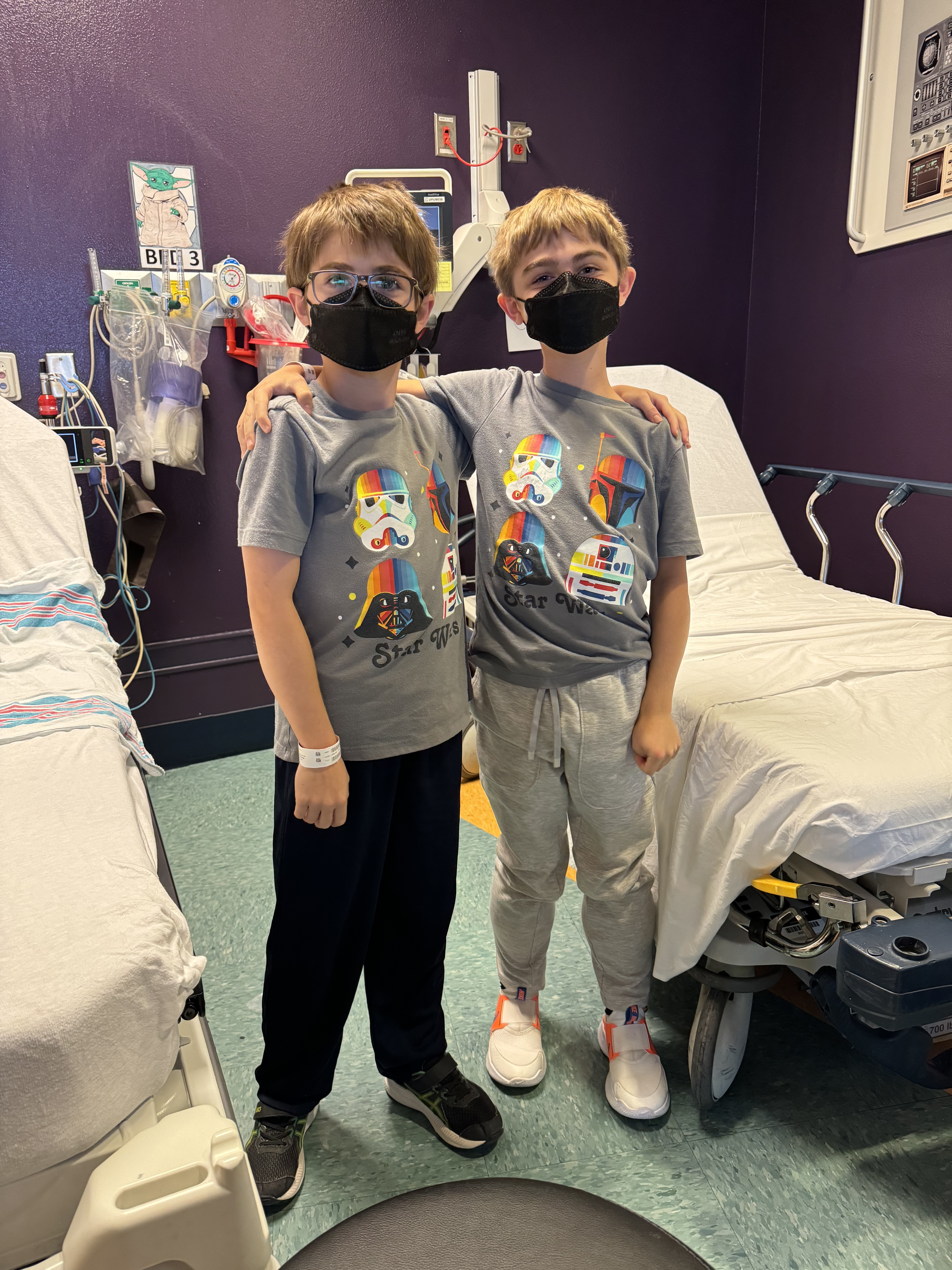 On September 18, 2024. the 10- and 12-year-old brothers received their infusion at UNM Children’s Hospital. Cardon said the two would likely experience flu-like symptoms for the first couple of weeks, but then she anticipates the treatment will begin working immediately, creating the muscle protein the boys need.
On September 18, 2024. the 10- and 12-year-old brothers received their infusion at UNM Children’s Hospital. Cardon said the two would likely experience flu-like symptoms for the first couple of weeks, but then she anticipates the treatment will begin working immediately, creating the muscle protein the boys need.
“Our hope is that within the next week or two, that they are feeling good and that we're seeing at least stabilization of their strength,” Cardon said. “The monitoring period after the infusion is primarily over the next three months. But of course, these are patients that we will follow lifelong.”
Smiling next to his sons, Aaron Haslam said this day was like breathing a sigh of relief.
“It's extra hope, you know, in terms of what they can do and engage in throughout their lives,” he said.
With the hope that this treatment will slow this disease, for mom, it means her sons can dream about what they want to be when they grow up - without limitations.
“Right now, they say things like ‘I don't know what I'm going to be when I grow up, because I don't know if I'm going to be in a wheelchair. I just don't know,’” she said. “So, hopefully now they can think of careers that they wouldn't be able to do before.”
Chicarelli said it’s the support of the community, including support of the hospital’s mill levy, that makes moments like this possible.
“When the community invests in a place like UNM Hospital, we're able to provide the most cutting-edge and high technology care available,” he said.
UNM Hospital Mill Levy
If you’re interested in learning more about the UNM Hospital mill levy and how the investment enriches care for patients and supports clinician teams, please visit this website.
